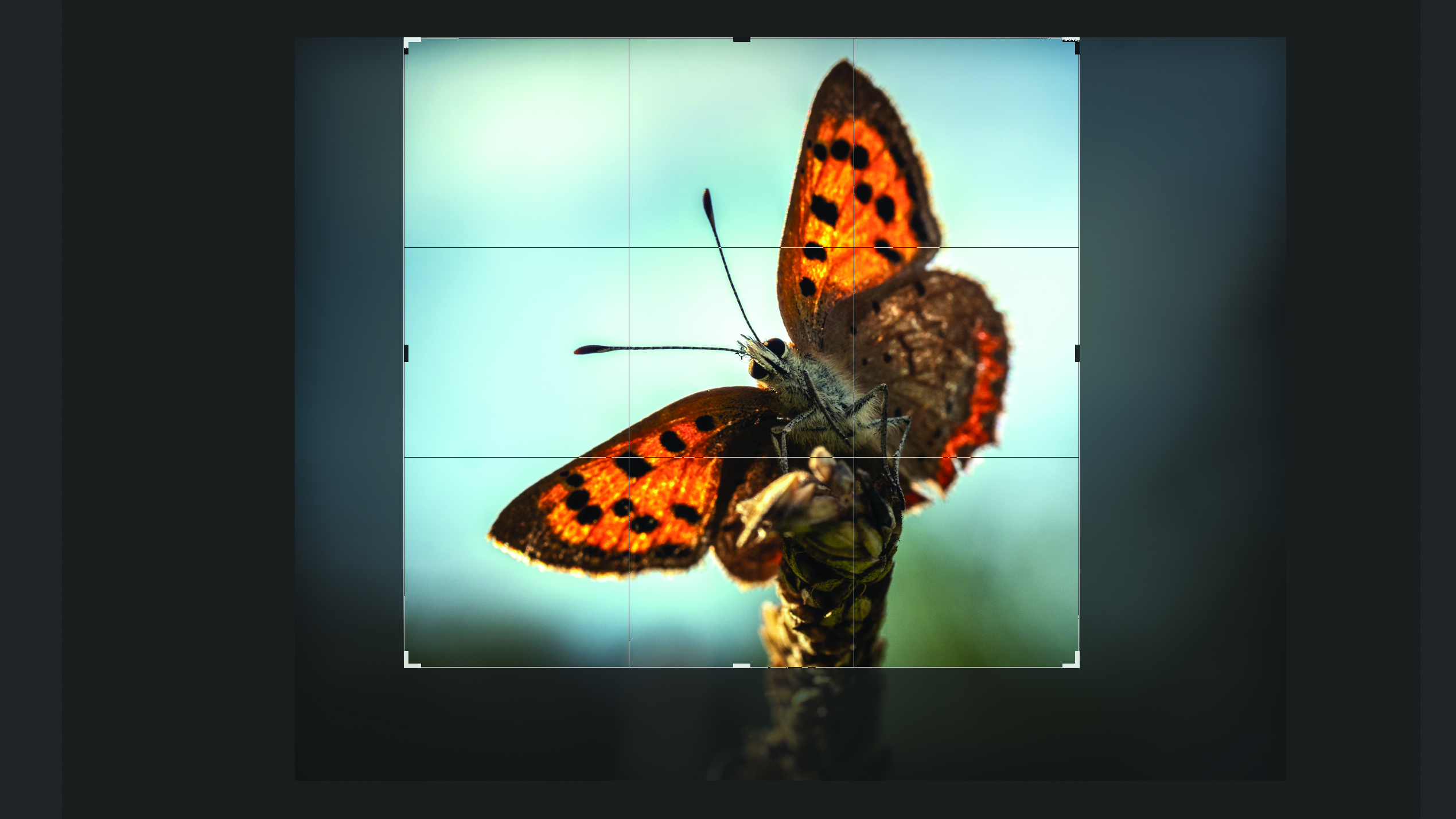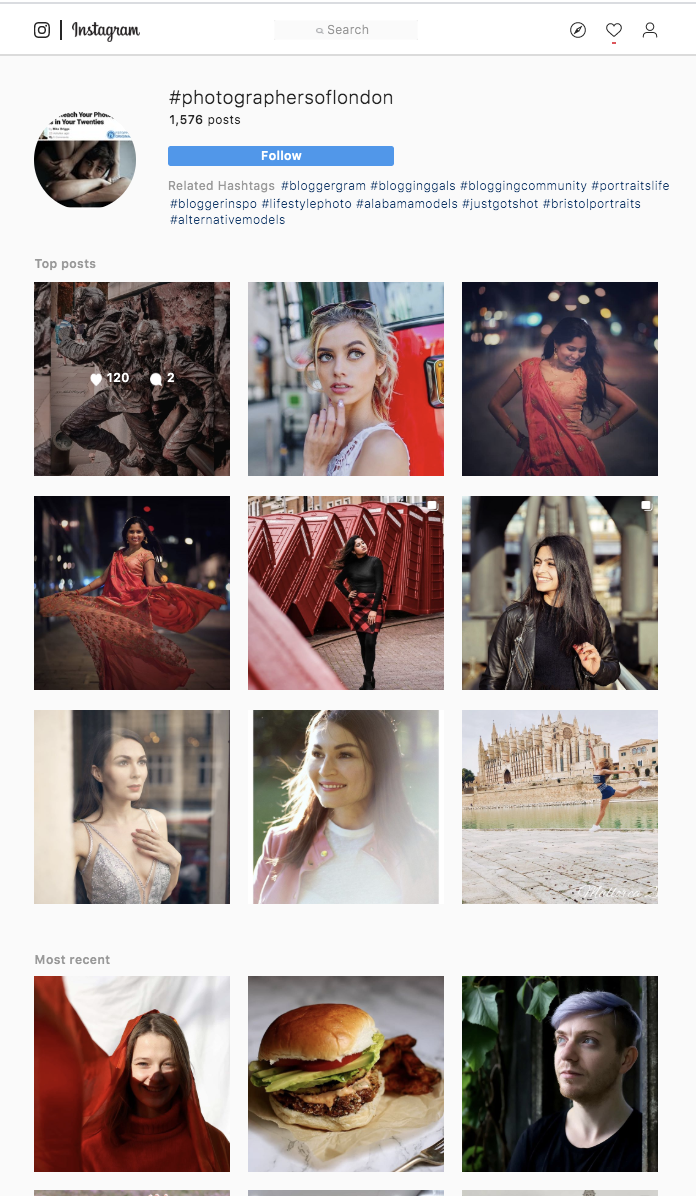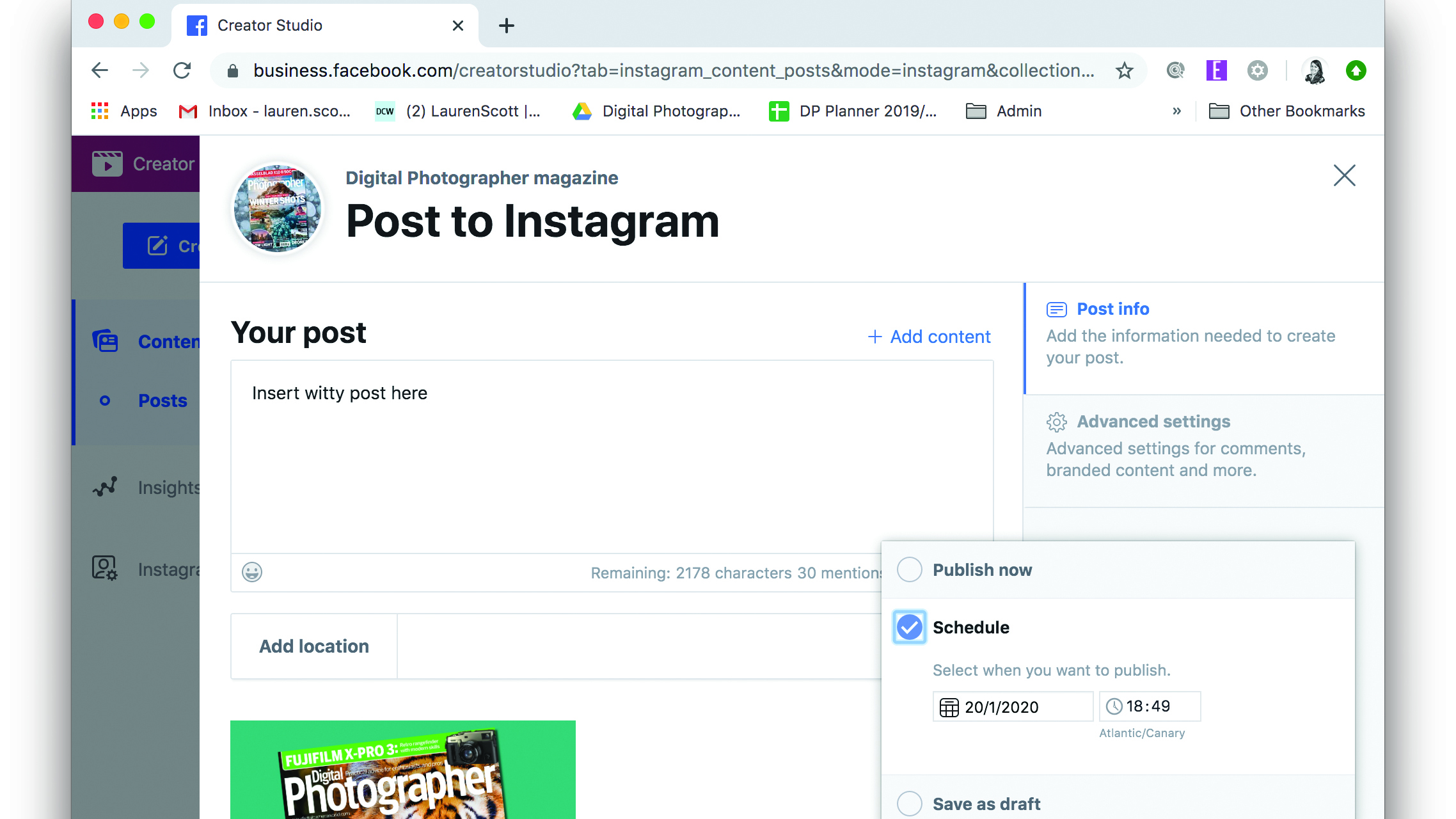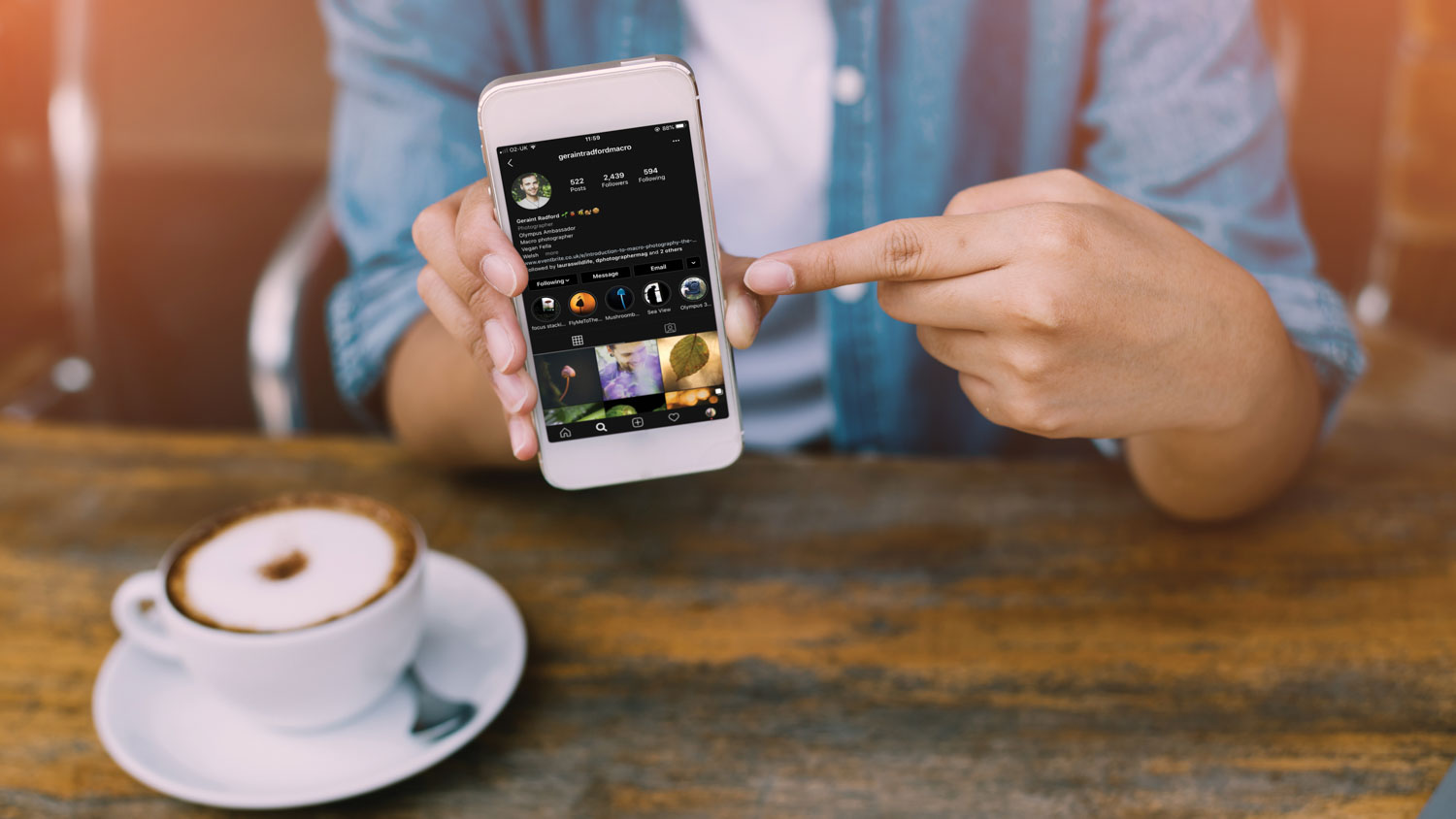10 tips for Instagram success with your photography
Instagram is the perfect place to showcase your photography and find followers. Here's 10 Instagram tips to make your portfolio stand out from the rest

A day in the life - Followers love posts that show the personal and creative details of photography life.
Milestones - Celebrate a certain number of followers, a new camera, the number of years in photography
Announcements - Shout about a recent collaboration, competition win or new body of work.
Inspiration - Use the Repost app to share images from others who inspire you.
Behind the scenes - Share insightful videos and stills that reveal how you put a shoot together.
Whether you love it or loathe it, social media has become so ingrained in our daily lives that it’s almost impossible to be a photographer without getting on the bandwagon – and your friends and fans will expect you to be on Instagram. Below you will find tips for Instagram success…
Read more: 20 famous photographers you should follow on Instagram
Many picture buyers and editors now look to platforms like Instagram when searching for stunning photos and content, while brands and manufacturers use the app to attract new followers and customers.
Social media is still new to some of us, however, and it’s hard to know how to navigate through the ever-changing algorithms, understand what content people want to see and how to use it to promote images (and your photography business).
We know that photo likes and follows aren’t everything, but in our modern world they certainly help you to get noticed.
So, here are ten Instagram tips to turn your account into a beautiful portfolio and community opportunity, attract views and hopefully grow your presence in the industry to a social-savvy generation – if you’re not there already.
1. Choose your account
Firstly, you need to make sure you’ve got the right Instagram account for you – business, creator or personal?
You’d think that setting up as a creator would be the best shout for photographers, but the choice isn’t always that clear-cut. While as a creator you can access Instagram Creator Studio on your desktop, you can’t connect your profile to any third-party apps.
Going full business arguably gives you the best range of analytics (Instagram Insights) about your posts and followers, plus features that will help you to further the reach of your images with promotions.
It’s still free to use if you don’t want to schedule content or use ads, but you can also add a Contact button near the top of the profile for a phone number or direct email address (there’s no obligation to do this if you’d rather not).
2. Perfect your bio

Make sure your bio is up to scratch, giving it some love and making sure it accurately represents you. This area is personal, and what you add or don’t add will depend on your genre, style and general approach to image-making.
See the bio as the ‘about me’ section that you would have on a traditional portfolio website, just condensed considerably. Think about what information is key for viewers to see when they first hit your profile.
A fine-art photographer might keep their bio simple with just a name and website, whereas a travel photographer would likely update their bio regularly by adding their current location, plus any brand affiliations.
Some photographers also choose to add an email or call option via the Contact button, but Instagram has a messaging function itself, so this isn’t vital.
Emojis are no longer resigned to informal conversations with pals, so break through any language barriers by adding fun icons to your page if these help to illustrate what you and your photography are about.
Instagram isn’t so much about being stuffy and professional as being uniquely you, so let your own personality and your bio be your first selling point and way to engage viewers.
3. Add and schedule the right content
Once your profile is set up, it’s a good idea to start populating your feed with images so that it doesn’t look bare. It’s likely that you’ve already got a website, so think about your favourite or best-performing images from your portfolio there.
If you’ve already set up your Instagram account and just want tips for smarter ways to post content and find followers, there are paid tools out there.
For example, Combin is an Instagram ‘growth’ tool aimed at attracting organic audiences, with a search function that lets you find accounts and posts from your targeted audience by hashtag and location.
4. Keep the visuals spot on

As an accomplished photographer, it goes without saying that your images should speak for themselves. But Instagram is such a unique (sometimes limited) photo platform that you need to optimise your images so that they look their best when shown off in such as small format.
How is that tiny square crop going to display your shot? It’s fine to upload images that aren’t square in format, just consider where the main focal point will be once shown as a square on your feed. Edit your images using your preferred software first, send them to your mobile device, then upload them from there.
To allow images room to breathe, many photographers decide to crop their images into square sections, posting them in sequence so that they add up to a larger display of an image on your feed. Some photographers abhor those that apply the same filters to all of their images, but this approach can create a consistent look and style across your feed. Stray away from conventional Instagram filters, and opt for offerings from apps such as VSCO.
5. Engage with your audience

Instagram has several algorithms it uses to prioritize the images on a user’s feed. It goes without saying that you need to be uploading 'quality content’ – not just technically good images but also timely and relevant ones – but you also need to focus on the relationship you have with your audience.
The general idea is that if a user interacts with lots of your content, they are even more likely to see what you post in the future. In other words, consistent content from you, plus consistent engagement on your posts (and Instagram stories) could help you rank better, so that more people will see your photos, share them, and it will snowball.
Because engagement breeds engagement, the more you post fun, quirky stories or images, the more likely your audience will be to feed back to you again. But what should you post? Instagram is a place to give followers an insight into your daily photo activity, whether that means posting stories from behind the scenes of a busy shoot, final images that you love, or even touches you might think are too personal, such as where you went for a lunch meeting with a model or client. If you’re a photographer who’s still building a career, share the inspirations behind your work, or any personal projects that you’re working on.
There’s a certain authenticity to Instagram, so it’s a tough balance between creating interesting content and trying so hard that you come across as someone who isn’t being genuine. You don’t want to build up a following for portraying images that aren’t really you, as this approach will be hard to maintain as you grow.
• How I reached 10,000 Instagram followers
6. Use hashtags smartly

Using the right Instagram hashtag is an important way to get more eyes on your images. Aim to use relevant, targeted hashtags on your posts and stories, as these will help non-followers to find your work amid the millions posted on the platform. You can use up to 30 hashtags on a post and ten on a story, but it’s best to think carefully about which apply to your specific post.
To break down the confusion over hashtags, there are several types. Community hashtags, for example #photographersoflondon will connect like-minded viewers. Some companies also have branded hashtags, such as #TeamCanon for Canon USA.
Instead of using popular but generic hashtags such as #camera, aim to find niche ones that are more relevant to your viewers. Research the hashtags other photographers, competitors and manufacturers are using.
7. Use Insights

We’ve already mentioned the benefits of setting up a business rather than personal Instagram profile for your work. Instagram Insights provides a breakdown of your performance on the platform, including new followers, profile views, impressions, number of posts, reach, website clicks, and also email clicks.
Once you’ve been posting for a while though, you’ll also be able to see the makeup of your regular audience, including their age, gender and where they’re from. As the previous tip was to post content that felt authentic to you, we’re not saying you start tailoring posts to suit your audience, but it’s nice – and downright fascinating – to know who and where they are.
8. Post regularly

One of the easiest ways to plan out your posts is by using an Instagram scheduling platform. Scheduling your posts ahead of time doesn’t just make it easier for you to maintain a consistent aesthetic, it also helps you to post at regular intervals, and more importantly when your followers are most likely to be online.
Digging into your Instagram Insights is another way to help you make sure you’re posting at the right time. Find out exactly when your audience is most active, schedule your content, increase your exposure and make sure your imagery is reaching more eyes. When it comes to choosing what content to post to Instagram, more isn’t always better. Better is better.
There are many apps and tools for scheduling posts, including Buffer, Hootsuite and Later. Research the pricing and function of each to see which fits your needs best.
9. Connect with stories and highlights
We’ve already mentioned the importance of engagement, but more specifically this means using stories and highlights. Instagram describes stories as a way to “share all the moments of your day, not just the ones you want to keep on your profile.” With a story, users will see multiple photos and videos, appearing as a slideshow reel from the last 24 hours. To create a story, access your camera, take a photo or record a video, and select Add To Story rather than your feed.
After you’ve recorded content, there’s a range of filters, plus text and drawings that can be added. So where do highlights come in? Highlights enable you to group old stories together in a section that sits below the Instagram bio. This way, you can choose your favourite moments, or show all the sides of your career to people whenever they visit. You can add more media to a highlight at any time, so don’t worry about getting it perfect the first time.
10. Don’t focus on the likes

You might think that likes are the only thing worth counting when quantifying your ‘success’ on Instagram, but this isn’t true. It’s also worth noting that if you’re in the United States, Instagram is now hiding public likes on all posts. This a BIG deal for the platform, but it doesn’t have to affect why or how you post photographs.
Adam Mosseri, CEO of Instagram, told Buzzfeed last year that removing likes was “about creating a less pressurised environment where people feel comfortable expressing themselves.” So with that in mind, let your photography and your own personality do the talking. Don’t expect major engagement or growth on Instagram overnight, as it can take years to build up an audience – much like building a photographic career.
Keep scheduling gorgeous images when you can, and the audience will follow.
Read more:
Best cameras for Instagram in 2020
Go viral as a photographer: 6 steps for improving your social media success
20 famous photographers you should follow on Instagram
Best free Instagram Stories template for photographers
The best camera deals, reviews, product advice, and unmissable photography news, direct to your inbox!
Digital Photographer is the ultimate monthly photography magazine for enthusiasts and pros in today’s digital marketplace.
Every issue readers are treated to interviews with leading expert photographers, cutting-edge imagery, practical shooting advice and the very latest high-end digital news and equipment reviews. The team includes seasoned journalists and passionate photographers such as the Editor Peter Fenech, who are well positioned to bring you authoritative reviews and tutorials on cameras, lenses, lighting, gimbals and more.
Whether you’re a part-time amateur or a full-time pro, Digital Photographer aims to challenge, motivate and inspire you to take your best shot and get the most out of your kit, whether you’re a hobbyist or a seasoned shooter.

